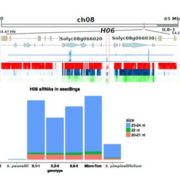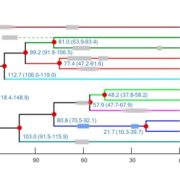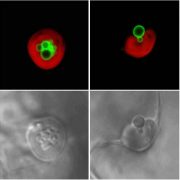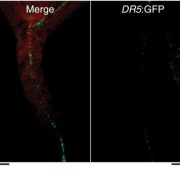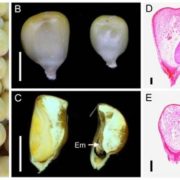Gene networks underlying cannabinoid and terpenoid accumulation in cannabis (Plant Physiol)
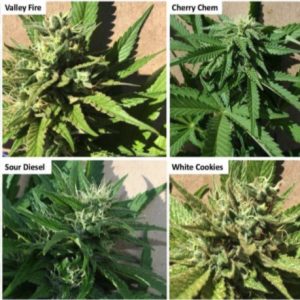 Recent changes in the legal status of cannabis and cannabis-products have allowed renewed scientific interest in the genetic and metabolic basis of cannabis’ effects as well as the regulatory issues related to quality control of the products. Many varieties of Cannabis spp. have poorly documented pedigrees, and a focus on breeding simply for increased THC has left the chemical diversity relatively understudied. In this recent study, Zager et al. have characterized nine varieties of hybrid Cannabis based on their 1) metabolite profiles for a variety of psychoactive or fragrant compounds, and 2) gene expression profiles in the glandular hairs known to by the site of synthesis for many of these compounds. The authors use several dimensional reduction and clustering techniques to confirm that the Cannabis varieties have low within-variety variability and also cluster according to purported species dominance in the hybrid cross (C. sativa or C. indica). Having established a strong gene-to-metabolite correlation, the authors go on to functionally characterize several enzymes in the cannabinoid/terpenoid biosynthesis pathway. These results lay a foundation for further metabolic studies of this valuable plant, and also provide a framework for verification Cannabis metabolite content in a commercial setting. (Summary by Alex Rajewski) Plant Phys 10.1104/pp.18.01506
Recent changes in the legal status of cannabis and cannabis-products have allowed renewed scientific interest in the genetic and metabolic basis of cannabis’ effects as well as the regulatory issues related to quality control of the products. Many varieties of Cannabis spp. have poorly documented pedigrees, and a focus on breeding simply for increased THC has left the chemical diversity relatively understudied. In this recent study, Zager et al. have characterized nine varieties of hybrid Cannabis based on their 1) metabolite profiles for a variety of psychoactive or fragrant compounds, and 2) gene expression profiles in the glandular hairs known to by the site of synthesis for many of these compounds. The authors use several dimensional reduction and clustering techniques to confirm that the Cannabis varieties have low within-variety variability and also cluster according to purported species dominance in the hybrid cross (C. sativa or C. indica). Having established a strong gene-to-metabolite correlation, the authors go on to functionally characterize several enzymes in the cannabinoid/terpenoid biosynthesis pathway. These results lay a foundation for further metabolic studies of this valuable plant, and also provide a framework for verification Cannabis metabolite content in a commercial setting. (Summary by Alex Rajewski) Plant Phys 10.1104/pp.18.01506


